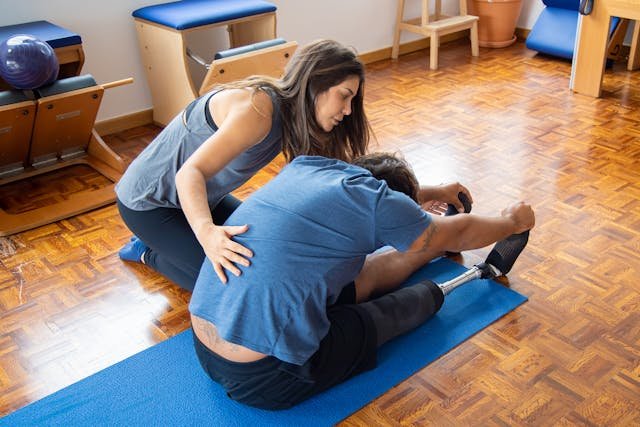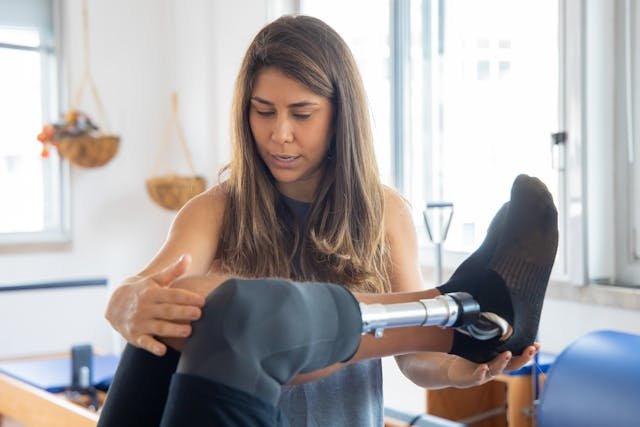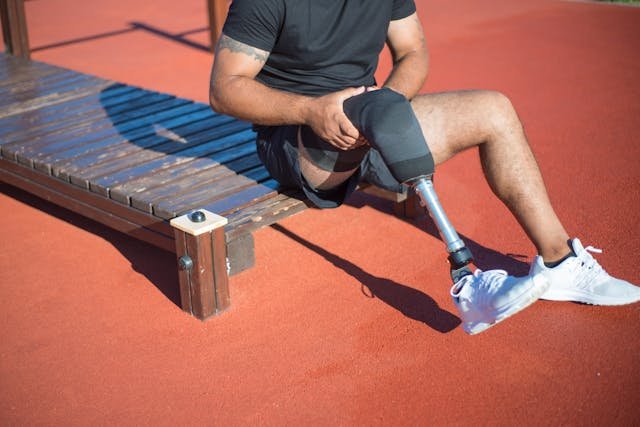A brachial plexus injury can change someone’s life in just a moment. It affects the nerves that control the shoulder, arm, and hand — often making it hard or even impossible to move the upper limb normally. When this happens, patients are usually faced with a big question: should I go for surgery, or should I try a prosthetic solution? Both options have their benefits, and both come with their own set of challenges. Choosing the right path is not easy, but understanding your choices can help make that decision clearer.
At Robobionics, we’ve worked closely with people on both sides of this decision. Some choose surgery and later use a prosthetic. Others skip surgery entirely and go straight to a prosthetic device. There is no single right answer — only what fits your body, your life, and your goals. In this article, we’ll break down the differences between surgical and prosthetic options, look at when each is useful, and help you understand how to decide what’s best for you or your loved one.
Understanding Brachial Plexus Injury Outcomes

A brachial plexus injury doesn’t look the same for every person. The injury can be mild or severe, and that affects everything that comes after. Some people can recover with time, while others may face long-term or even permanent loss of movement. Before choosing surgery or a prosthetic, it’s important to understand how your injury is likely to heal — and what your body is capable of.
In some cases, nerves heal slowly on their own, and therapy is enough to regain function. But when nerves are completely torn or damaged at the root, natural healing becomes much harder. These are the cases where surgery or prosthetics are often discussed. Doctors may suggest nerve grafts, transfers, or muscle replacements, all of which aim to bring back some degree of movement. These procedures can help, but they take time and come with a recovery period.
On the other hand, if recovery seems limited or if surgery is not likely to work, prosthetics can offer a quicker, more predictable path to function. A prosthetic doesn’t restore the nerve but gives you a way to move and control your limb again. That’s why understanding the exact nature of the injury — through imaging, muscle testing, and expert opinion — is the first step. It helps you decide which direction gives you the best chance at getting your life back to normal.
When Time Matters in the Healing Process
Time is very important in nerve recovery. If nerves are not healing properly within six months after the injury, doctors may begin to explore surgical options. The longer a damaged nerve goes without use, the less chance it has to recover. Muscles can begin to shrink, and the body can lose its ability to reconnect nerve signals. That’s why many specialists suggest a decision within the first year.
During this time, physical therapy is often used to keep the arm mobile and maintain as much muscle tone as possible. If no signs of return are seen, surgery becomes more urgent. But not all patients want to wait that long, especially if the injury is clearly severe. Some may decide early to explore prosthetic options, especially when they want to regain some function while waiting or if they wish to avoid surgery altogether.
The Role of Imaging and Expert Evaluation

Before deciding on surgery or prosthetics, you need clear answers about the injury. This is where imaging tests like MRI or nerve conduction studies play a big role. These tests show the exact location and type of damage — whether nerves are torn, stretched, or completely disconnected. An expert’s opinion, usually from a neurosurgeon or orthopedic specialist, helps you understand what recovery might look like.
In many cases, the injury affects more than just one nerve. That means the shoulder, elbow, and hand could all be involved. This makes treatment more complex, and the choice between surgery and prosthetics may vary depending on which parts of the arm can still move. An honest conversation with your doctor about what you can realistically expect after surgery is an important part of the decision.
Comparing Surgical and Prosthetic Outcomes
Choosing between surgery and prosthetics means thinking carefully about your goals, your timeline, and your lifestyle. Surgery tries to restore natural movement, but it often takes months or even years to show results. A prosthetic device gives you function sooner, but it doesn’t restore sensation or nerve function. Each option comes with its own set of benefits, and each can lead to success when matched correctly with the user’s needs.
Surgery may bring back limited motion, especially in the shoulder or elbow, but results vary. Some people regain useful movement and can combine that with therapy to return to daily tasks. Others find that even after surgery, certain motions or hand functions don’t come back fully. In these cases, a prosthetic can still be added later to improve grip and support the hand or wrist during activity.
Prosthetic intervention offers immediate results. Devices like our Grippy™ bionic hand allow users to hold, grip, lift, and carry items again. They don’t rely on nerve recovery, which means users can begin rehab right away. While surgery tries to repair what was lost, prosthetics offer a new way to function — one that’s controlled, predictable, and available even when surgery isn’t.
Recovery Time and Effort

One of the main differences between surgery and prosthetic use is the time it takes to recover. Surgery often requires a long period of healing followed by intense physical therapy. Some people may not see results for six months to a year or more. During this time, users may have limited function, and frustration can set in. Surgery also involves the risks of anesthesia, infection, and scarring.
Prosthetic intervention, on the other hand, starts working much sooner. Once a custom device is fitted, the user begins training and adaptation right away. Within a few weeks, many people start using the device in daily life. The training takes time, of course, but there’s a clear timeline and steady progress. The support of occupational therapy makes the learning process smoother and more rewarding.
Personal Goals and Lifestyle Choices
Choosing between surgery and a prosthesis is not just a medical decision — it’s a personal one. What do you want your life to look like in six months or a year? Are you focused on getting back to work, caring for your family, or enjoying a hobby? Your goals should guide the treatment you choose. Some people are comfortable waiting and hoping for natural recovery. Others want something they can rely on sooner.
For those who want to regain hand function quickly, a prosthetic might offer more independence in less time. For those who believe their nerves have a strong chance of recovery, surgery could offer a path to more natural movement. But it’s important to remember that you don’t always have to choose one over the other. Some users benefit from both — starting with a prosthetic, then adding surgical recovery later, or using a prosthesis alongside limited function after surgery.
How to Make the Right Decision

There’s no one answer that works for everyone. The best choice depends on your body, your injury, your goals, and how you want to live your life. That’s why it’s important to take time, ask questions, and gather support. This decision is not just about fixing an arm — it’s about choosing how you want to move forward, how you want to adapt, and what kind of progress feels right for you.
Start by talking to your doctor openly. Ask about the chances of recovery through surgery, and what limitations might remain. Discuss what recovery would look like — how long it takes, what you’ll need, and what to expect at each step. Then, explore what prosthetic solutions can offer in comparison. Consider how soon you want to regain function, what support you have at home, and how much time you can commit to therapy.
Trying a Prosthetic Before Deciding
Many people don’t realize they can try a prosthesis before making a final decision. This is a powerful way to see how the device feels, what it can do, and how it fits into daily life. Trying a prosthetic early can also provide support while you wait for surgery or while your body heals. It gives you a way to stay active, reduce frustration, and keep building independence.
A trial doesn’t commit you to a long-term path. It’s simply a way to learn more and see what’s possible. In some cases, users find that the prosthesis meets all their needs and they no longer wish to go through surgery. In other cases, the prosthetic becomes a helpful tool even after surgery — especially when some hand functions do not return fully.
Combining Both Approaches

Sometimes, the best solution is not choosing between surgery and prosthetics — it’s combining them. Some people regain shoulder or elbow movement after surgery but still struggle with hand control. Others may regain some motion but lack the strength to do daily tasks. In these cases, a prosthesis can provide the missing support that surgery could not.
Combining both paths allows for a more complete recovery. You can benefit from restored movement and still use the prosthesis to extend your function. Occupational therapy helps blend both approaches into a seamless routine. This way, you’re not limited by any single method — you’re building a system that works for your unique body and goals.
Long-Term Rehabilitation and Support After the Decision
Whether a person chooses surgery, prosthetics, or both, one thing remains true — recovery doesn’t stop after the decision. In fact, that’s when the real work begins. Long-term success depends on the support you receive after the treatment and how well you stick to your rehabilitation goals. Building strength, relearning skills, and adapting to your new way of movement takes time, effort, and patience. This is where a strong support system makes all the difference.
Occupational therapists, physiotherapists, prosthetic experts, and family members all play important roles in your long-term recovery. They help guide your progress, adjust your training as your ability improves, and ensure you don’t feel alone. At Robobionics, we believe that care doesn’t end at delivery — it continues through training, check-ins, and guidance at every step.
Whether you’ve had nerve surgery or just started using a prosthetic arm, there are structured ways to build strength, independence, and confidence. This next stage is all about making your recovery stick — and turning what once felt difficult into part of your daily routine.
Continued Therapy for Muscle Memory and Coordination

The body needs repetition to learn. Just like a baby learns to walk by falling and trying again, using a prosthetic or recovering from nerve surgery also requires repetition. Daily movements must become habits, and that only happens with regular therapy. Even after the initial rehab phase is done, continued therapy is essential to keep improving or avoid losing what you’ve gained.
For prosthetic users, this means ongoing practice with grip patterns, arm positioning, and coordination. It helps you move naturally without overthinking every action. For surgical recovery, therapy focuses on keeping the nerves stimulated, the muscles active, and the joints flexible. The goal is not just movement — it’s smooth, useful movement that fits into your day.
Maintenance and Upgrades of Prosthetic Devices
Just like any useful tool, a prosthetic needs care to keep working well. Over time, your prosthesis may need adjustments to maintain comfort, function, or fit — especially if your body changes or your daily activities increase. This is why regular maintenance is not just helpful, but necessary for long-term success.
Users sometimes notice changes in how the device feels, or they may want to explore new features as they grow more confident. Maybe you want a stronger grip, more wrist movement, or better skin comfort. These small upgrades can make a big difference in how much you use the device each day. If left unchecked, discomfort or small problems can lead to frustration and reduced use over time.
Emotional and Peer Support for Long-Term Confidence

Recovery is not just about muscles and movement — it’s also about how you feel. Many users experience emotional ups and downs, especially when progress feels slow or when challenges come up in social or work settings. That’s why emotional and peer support plays a big role in the long-term success of both surgical and prosthetic users.
Talking to someone who’s been through the same journey can offer strength and insight that no manual or video ever could. Peer support groups help normalize the experience, reduce anxiety, and remind you that you’re not alone. For some, it’s about sharing wins; for others, it’s about having someone who listens and understands.
Conclusion: Choosing the Path That Moves You Forward
A brachial plexus injury changes your path — but it doesn’t stop your progress. Whether you choose surgery, a prosthetic solution, or a combination of both, the most important thing is choosing the option that gives you your life back. You don’t have to rush the decision, and you don’t have to make it alone. With the right information, the right support, and the right mindset, you can take control of your recovery and start building the life you want.
At Robobionics, we’re here to walk this journey with you. We design smart, lightweight prosthetics built for real people and real routines. We work with doctors, therapists, and users across India to bring advanced solutions to everyone who needs them — quickly, affordably, and with full support.
Still deciding between surgery and a prosthetic? Book your free consultation today, try our Grippy™ demo, or speak to a recovery specialist. Together, we’ll help you make the choice that moves you forward — one step, one solution, one success at a time.



